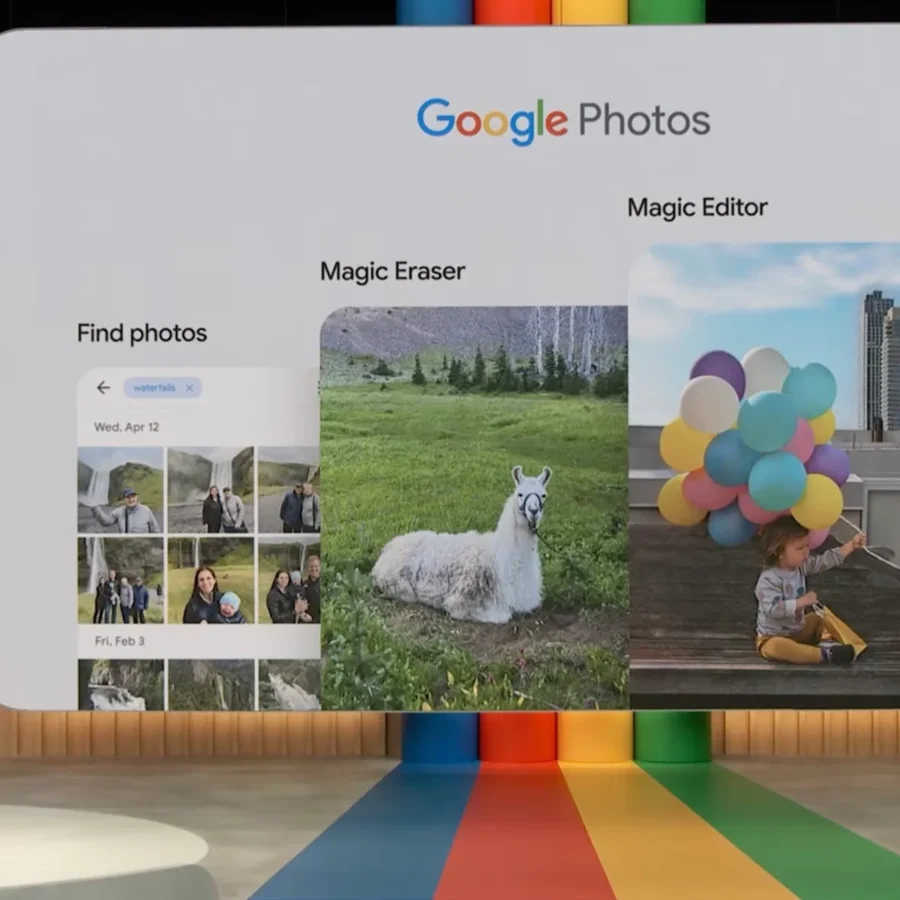Click here to buy secure, speedy, and reliable Web hosting, Cloud hosting, Agency hosting, VPS hosting, Website builder, Business email, Reach email marketing at 20% discount from our Gold Partner Hostinger You can also read 12 Top Reasons to Choose Hostinger’s Best Web Hosting
You want a great photo but don’t want to learn sliders, masks, or complex tools — that’s the problem. Spending twenty minutes fiddling with exposure, cloning out clutter, or rebuilding a background is frustrating and eats into the time you could spend creating or posting. The new Google Photos AI photo editing feature answers that pain: instead of knowing which tool to use, you simply tell Photos what to do — by typing or speaking — and Gemini-powered edits are applied automatically. It’s designed to get you from “meh” to publish-ready in seconds.
In this guide, you’ll discover eight standout envato elements free download picks—from sleek PSD templates to eye-catching watercolor backgrounds—that will supercharge your creative projects.
What’s new
Google Photos now supports conversational, text- or voice-driven image edits — ask for changes like “remove the cars in the background” or “restore this old photo” and Photos will perform corrective or creative edits for you.
The rollout begins first on Pixel 10 in the U.S., then expands to Android and iOS devices.
Google is also adding C2PA Content Credentials and maintaining support for SynthID/IPTC metadata to improve transparency about how images were made or edited.

How it actually works
Open a photo in Google Photos’ redesigned editor. The editor already offers one-tap suggestions and area-specific touches (tap or circle a region to get targeted edits).
Type or speak a request. Use a single prompt — “remove the people in the background and brighten the shadows” — or a series of follow-ups to refine the result. The editor uses Gemini models to interpret natural language and choose the editing operations that match your intent.
Review and tweak. Photos applies the changes; you can then fine-tune with sliders, repeat a request, or undo. The aim is to reduce or eliminate the need to know individual tool names.
Google AI Mode Launches to Revolutionize Search Experience in the UK
Why this matters
Many apps offer AI “one-tap” filters or automated fixes. What makes Google Photos AI photo editing different — and why it matters for creators and newsrooms — is threefold:
1. Conversational intent → predictable composite actions
Instead of hiding actions behind opaque filters, this approach maps human intent (a sentence) to a sequence of concrete edits (remove, relight, color-correct). That lowers the skill floor for non-editors while keeping control for pros who want to tweak results.
2. Workflow integration with device capture
Because Pixel 10 integrates Content Credentials at capture, there’s a chain of custody from camera to edit. For visual journalists and creators who need provenance or transparency, this is a step toward verifiable visual workflows.
3. Ethical and verification implications
Built-in support for C2PA and metadata (like IPTC and SynthID) positions Google to both enable creative editing and help users and platforms spot when an image has been AI-edited. That matters as AI-modified images spread — consumers, publishers, and fact-checkers gain a clearer path to determine an image’s editing history.
Gemini Temporary Chats: How Google’s “incognito” for AI Works
Mini case study — restoring a family photo (how you’d actually use it)
Scenario: You have a 1990s family photo: faded colors, scratches, and an unwanted lamp on the left.
Step-by-step:
Open the photo in Google Photos editor.
Prompt: “Restore colors, remove scratches, and remove the lamp on the left.”
Photos runs a restoration pass (color balance, noise reduction), a spot-heal pass (scratches), and a content-aware removal for the lamp.
Follow up: “Bring back some warmth in skin tones, but keep the background cool.” Apply tweak.
Result: A restored image with minimal manual masking — and all edits recorded in metadata/credentials so you or an editor can trace what changed. (This is a realistic workflow illustration based on the announced conversational editing capabilities.)
Practical tips and best practices
Be explicit but concise in prompts. “Remove the blue car behind her” is usually better than “clean up the background.”
Use follow-ups. The conversation model supports iterative refinement — don’t expect perfect first-pass results for complex composites.
Keep originals. Even with provenance metadata, retain an untouched master copy for legal or editorial review.
Check Content Credentials. If provenance matters, review the C2PA info that accompanies images on Pixel 10 and in Google Photos.
Limitations & things Google should clarify (constructive critique)
Rollout and platform parity. Feature availability is staged (Pixel 10 first). Timelines for broader Android/iOS access remain fuzzy for many markets.
Model transparency. While C2PA adds provenance, users and publishers will want clearer descriptions of which Gemini model variant and what generation settings were used.
Edge-case edits. Generative edits that significantly alter identity, scene content, or context will require editorial policy decisions for newsrooms and social platforms.
Google Workspace Integration 2025: Unlock Seamless Workflows with AI, APIs & Automation
Key Takeaways
Google Photos AI photo editing lets you edit by describing changes — no tool knowledge required.
Pixel 10 users in the U.S. get the feature first; wider rollout follows.
C2PA Content Credentials + IPTC/SynthID support improves traceability for edited images.
The conversational model lowers the skill barrier but raises new questions about provenance and editorial policy.
Practical workflow: prompt → review → tweak → preserve master — and always check the content credentials.
Gemini Veo 3: What Developers Need to Know About Google’s New Video Generator
FAQs
Q: When will Google Photos AI photo editing be available on my phone?
A: Google is rolling the feature out beginning with Pixel 10 users in the U.S.; Android and iOS deployments will follow gradually. Check Google Photos release notes for precise timing.
Q: Will edited photos be labeled as AI-edited?
A: Google is adding support for C2PA Content Credentials and retains IPTC/SynthID metadata to show how images were created or edited. This helps flag AI edits in a standardized way.
Q: Can the conversational editor change faces or make synthetic content?
A: The editor can apply creative edits, but major identity-altering edits raise ethical and policy issues. Expect guardrails, but always review results and provenance metadata before publishing sensitive images.
Q: Is this safe for professional photo editing?
A: It’s designed to speed up many common edits. Professionals may still prefer manual control for complex composites, but the conversational editor can accelerate routine fixes and prototyping.
How to Combine Two Photos in Photoshop: A Step-by-Step Guide for Stunning Results
Conclusion
Google Photos’ conversational AI editor turns editing from a tool-driven chore into a verbal (or typed) interaction: describe what you want, and Gemini-powered edits follow. For everyday users this cuts friction; for creators and publishers it opens possibilities — and responsibilities — around provenance and editorial transparency. If you care about fast, understandable edits with traceable history, this feature is worth testing once it reaches your device.
Try it on a Pixel 10 (if available), compare the conversational edits to your existing workflow, and subscribe to SmashingApps for hands-on tutorials and privacy-aware editing checklists.
Sources (official):
Google product announcement — Edit images in Google Photos by simply asking. blog.google
Now loading...




